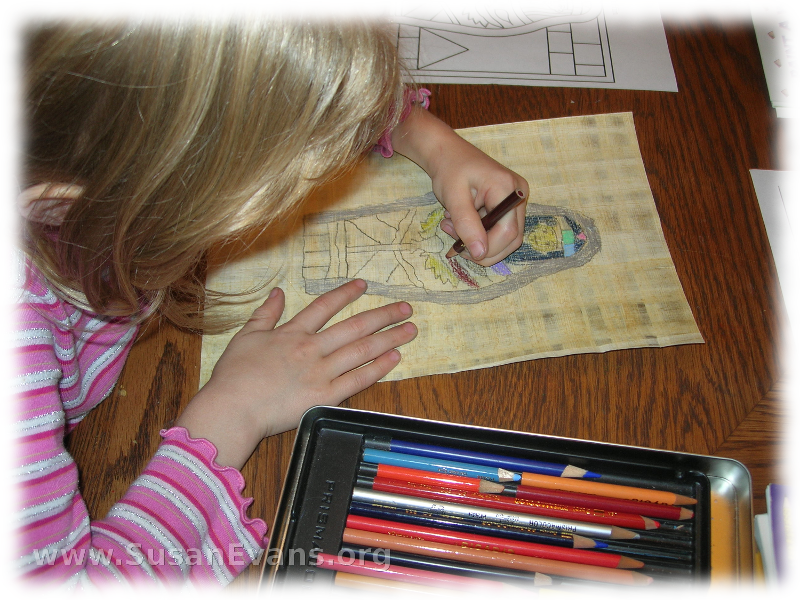 For our study of Ancient Egypt, we made some mummy dolls. This is how we did it.
For our study of Ancient Egypt, we made some mummy dolls. This is how we did it.
My daughter’s doll house dolls were matted, so I upgraded her dolls. I decided to turn the old dolls into mummies. First we washed the doll with water and spices. We used cinnamon to represent the spices, and after doing research, I discovered that cinnamon was one of the spices used on mummies anyway. Second, we immersed the mummy in salt and spices. Third, we washed it with oil and spices. Lastly, we put on strips of linen. Actually, the strips were from an old bed sheet, and instead of sticky resin, we used white school glue mixed with little water.
 The gluey mixture was very messy. If I had it to do over again, I would put wax paper under the whole project. (I didn’t want to put newspaper under it, because obviously the mummy would stick to the newspaper. But scrubbing the glue off the table wasn’t fun.)
The gluey mixture was very messy. If I had it to do over again, I would put wax paper under the whole project. (I didn’t want to put newspaper under it, because obviously the mummy would stick to the newspaper. But scrubbing the glue off the table wasn’t fun.)
It took two days for the mummies to dry. That is, except for Bryan’s. His mummy had so much oil on it that it seemed wet from the inside. Bryan decided to submerge it into salt, so that the salt would extract the moisture. (He learned that from our reading about mummies.) Sure enough, it worked. After only two days of sitting in the salt, the mummy was as dry as the Egyptian sand.












